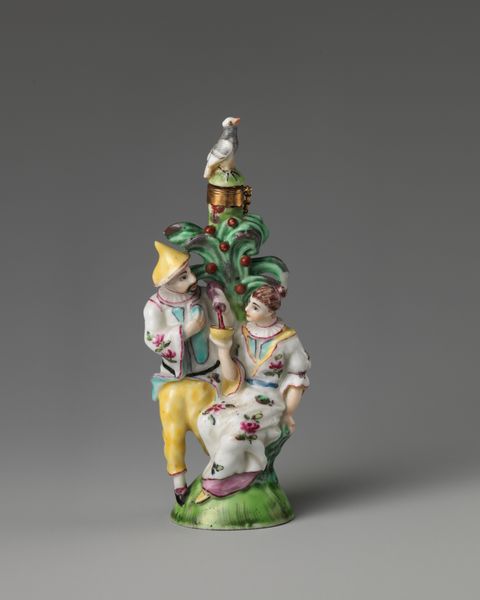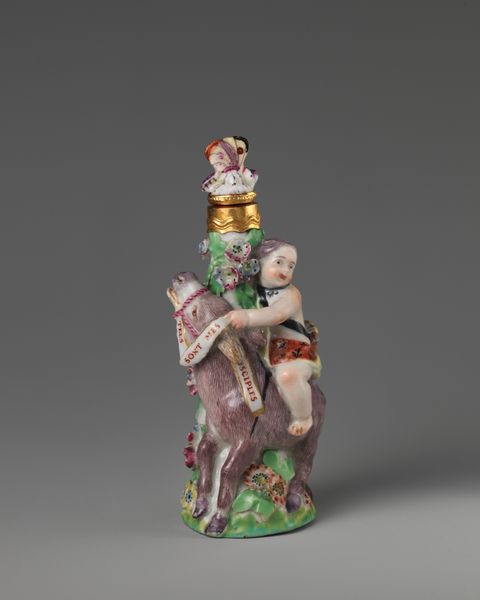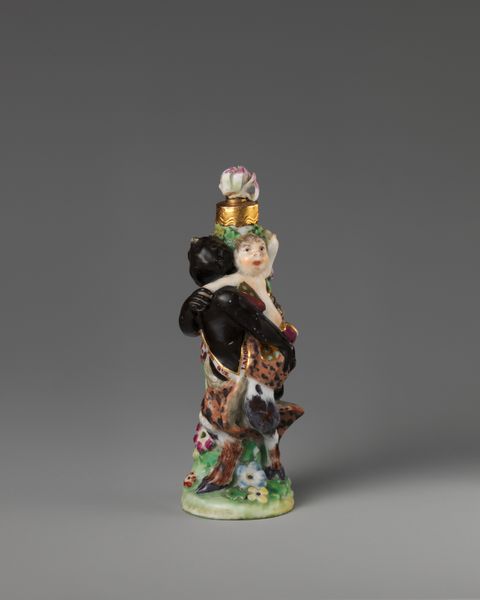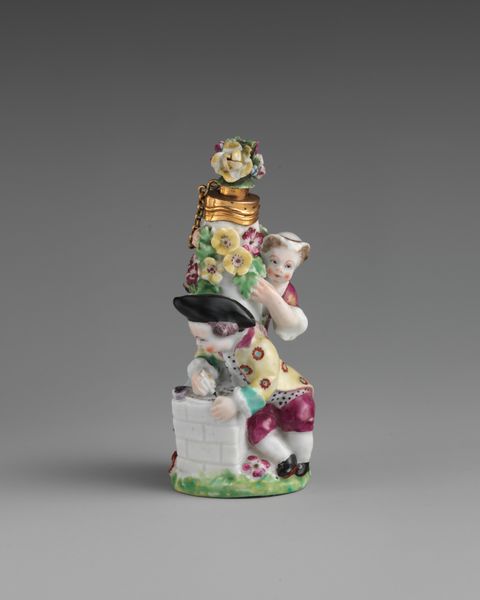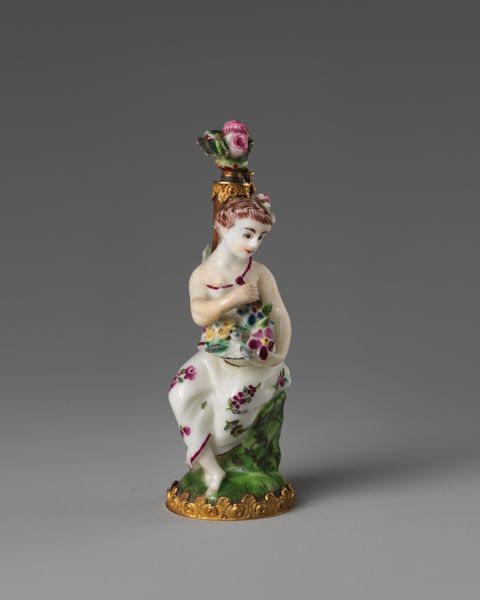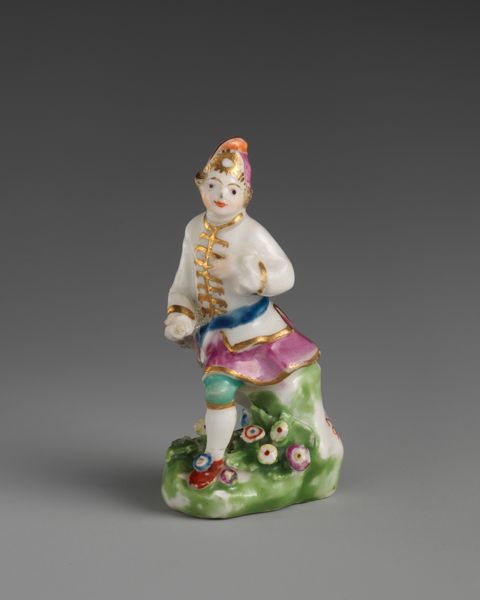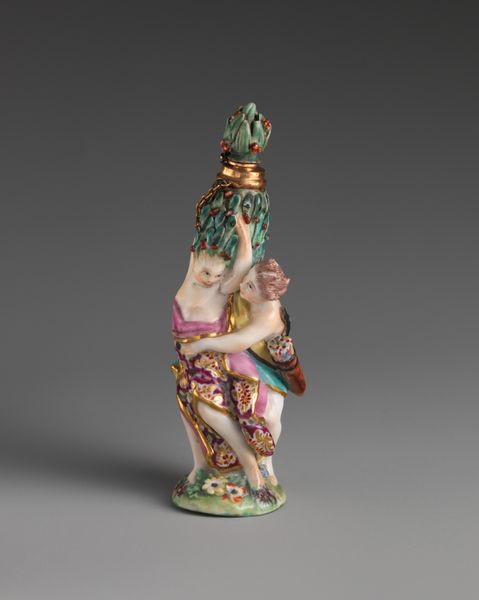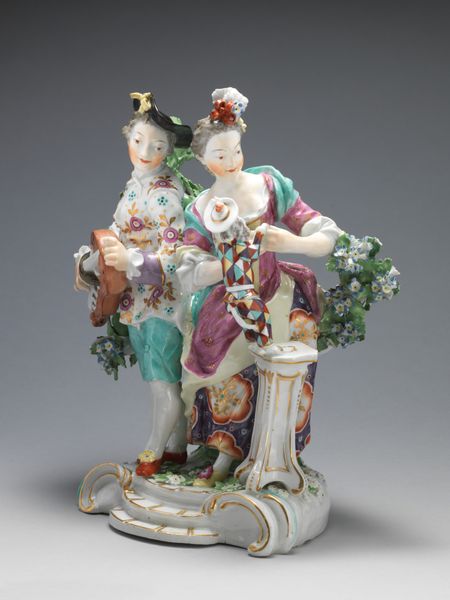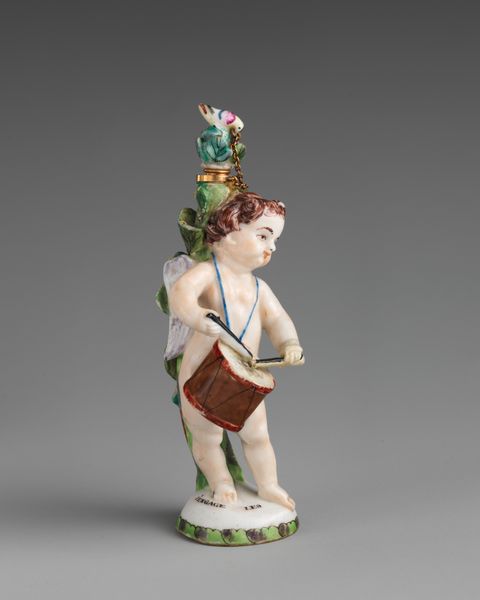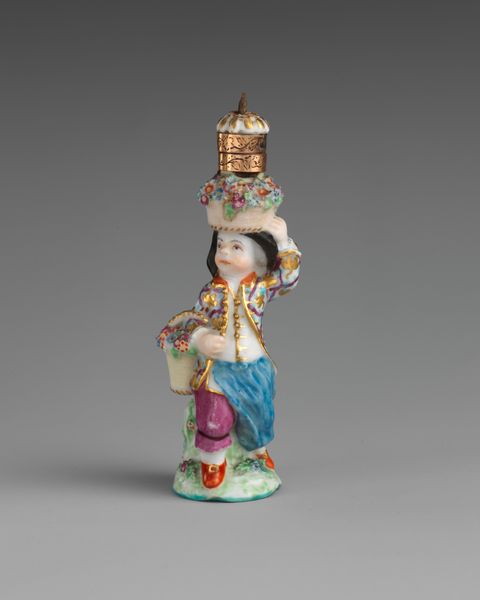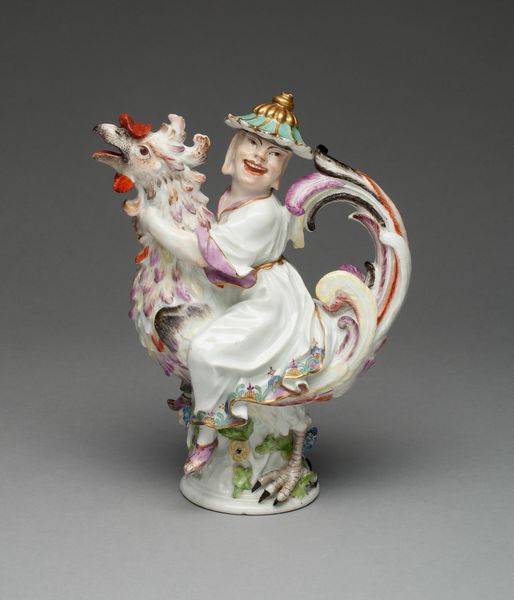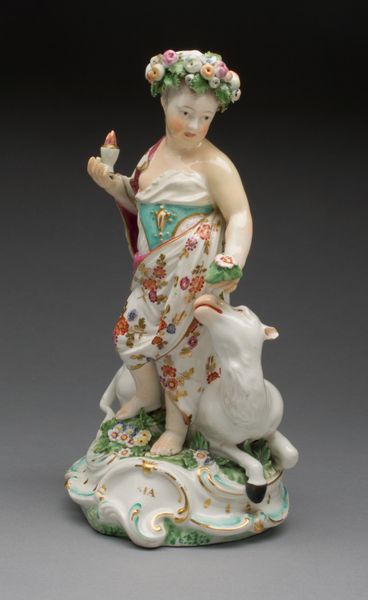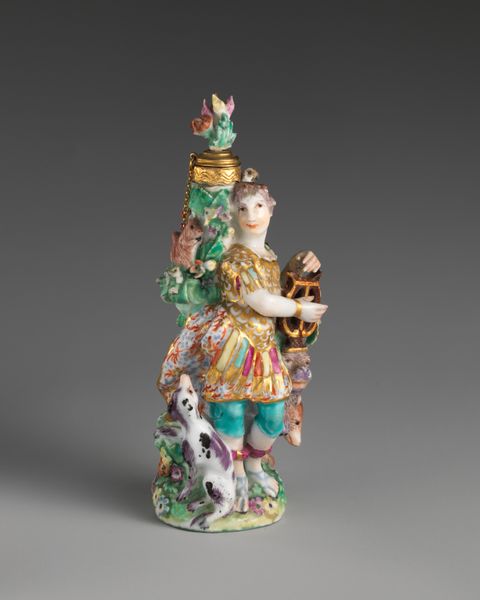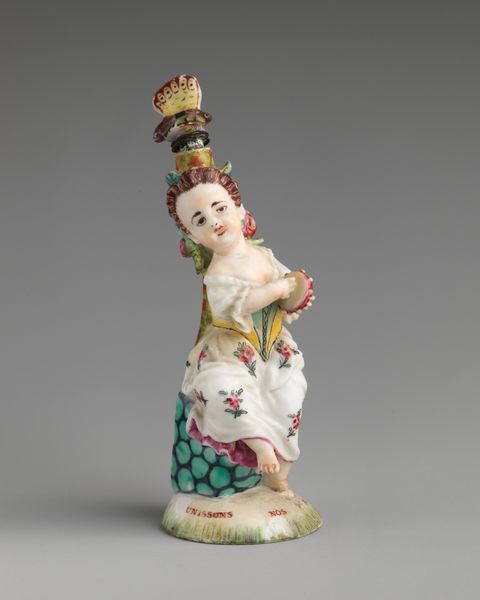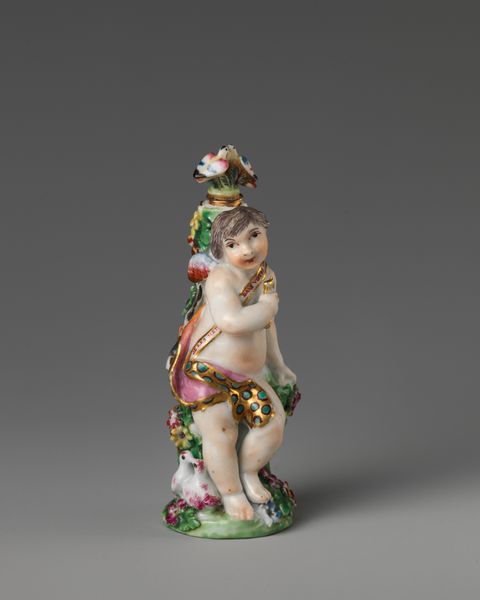
ceramic, porcelain, sculpture
#
caricature
#
ceramic
#
porcelain
#
figuration
#
folk-art
#
sculpture
#
genre-painting
#
decorative-art
#
miniature
#
rococo
Dimensions: Overall (confirmed): 4 5/8 × 2 13/16 × 2 5/8 in. (11.7 × 7.1 × 6.7 cm)
Copyright: Public Domain
Editor: Here we have "Dwarf (one of a pair)", crafted between 1735 and 1750 by Villeroy, using ceramic and porcelain. These small sculptures have an odd, humorous quality that I find very intriguing. How would you begin to unpack the visual dynamics at play here? Curator: Indeed. Observe how the artist manipulates form and proportion to create this sense of caricature. Note the contrast between the oversized heads and the compressed bodies, especially in the figure on the right. How does that impact your reading of the piece? Editor: It makes them feel unbalanced, almost unstable. The bulbous head on the right feels like it's weighing down the rest of the figure. Is this an example of Rococo sensibilities, or something more particular? Curator: Rococo revels in asymmetry and playful distortion, as is evident here, but it’s interesting to delve deeper. Reflect on the glaze. Observe how it gathers in the crevices, accentuating the sculptural form. What does that texture communicate? Editor: It almost seems to highlight their flaws, creating a tactile dimension that complements the overall impression of strangeness, rather like a distorted mirror reflection. Curator: Precisely. And consider how these figures, while miniature, possess a surprising monumentality in their stance and presence. How does their elevated position atop their pedestals play into this paradox? Editor: Good question! The pedestals definitely give them a sense of importance that contrasts with their, dare I say, silly appearance. It makes them almost royal caricatures? It sounds as though there's much more going on here than first meets the eye. Curator: Indeed. Through meticulous study of the forms, proportions, and materiality, we gain a richer understanding of the artists intentions and broader significance of such work. Editor: I see. Focusing on the formal elements has truly opened up my perception. Thanks!
Comments
No comments
Be the first to comment and join the conversation on the ultimate creative platform.
